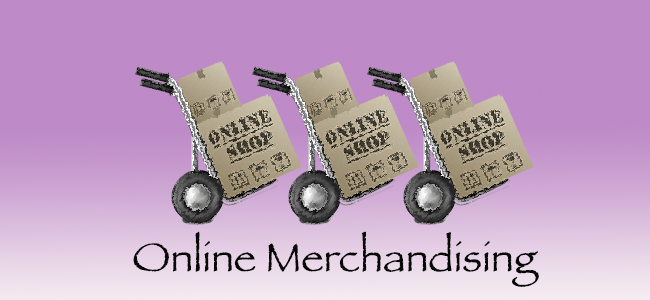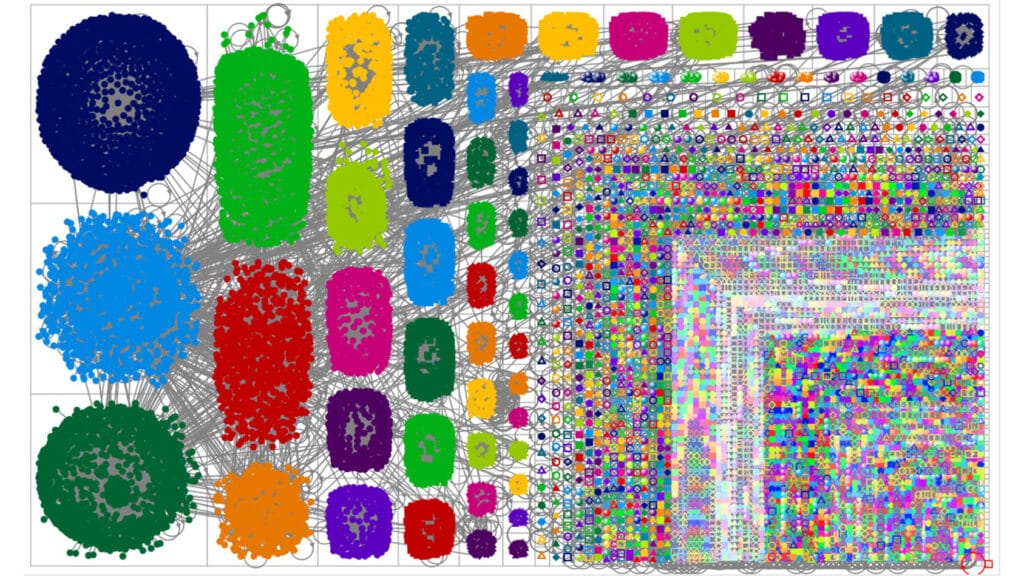With the growth of e-channels and the globalisation of many brands, the role of online merchandising is becoming increasingly important. Within the world of merchandising, there should be no distinction between a merchandiser and an online merchandiser, the only qualifying criteria being a merchandiser requires a physical outlet to manage. This article has been written to give you an insight into online merchandising.
Before you can gain this insight you need to understand exactly what merchandisers do? You will find that the job description will vary by organisation however it is fair to say most adopt a format which is similar to the definition given by Grace Kunz: “merchandising is the planning, developing and presenting of product lines for identified target markets with regard to pricing, assorting, styling and timing.”
The one thing missing from this definition is the element of promotion. I believe this is a key requirement because as well as letting the customer know what the offer is, it helps reduce working capital (stock) and maintains cash flow (two ingredients vital for every business). Integral to the process of promoting is the art of branding, this is because branding encompasses the entire customer experience. Without it there can be no relationship with the customers.
The example below illustrates how online branding should be done, it is from Apple, you can see that they have a consistent approach to their branding. One way of ensuring that this happens within your organisation is to produce a brand book (you can read my article on producing a brand book here) and disseminate it to the key members of the team.
[image source_type=”attachment_id” source_value=”2533″ caption=”Iphone” align=”center” icon=”zoom” size=”small” fitMobile=”true” autoHeight=”true” quality=”100″ lightbox=”true”]
[image source_type=”attachment_id” source_value=”2539″ caption=”Iphone Spian” align=”center” icon=”zoom” size=”small” fitMobile=”true” autoHeight=”true” quality=”100″ lightbox=”true”]
[image source_type=”attachment_id” source_value=”2540″ caption=”Iphone China” align=”center” icon=”zoom” size=”small” fitMobile=”true” autoHeight=”true” quality=”100″ lightbox=”true”]
Unfortunately not every business adopts this format, the example below illustrates how it should not be done. You will see that there is no consistency in the brand appearance across the different countries that it is delivered in. Some of you may argue that there is no need for this consistency but I say that branding promotes recognition and sets you apart from the competition. I contend that consistent branding is also more efficient; there should be no need to ‘reinvent the wheel’. Getting different agencies to produce a website for their respective countries can be a costly waste. If we return to the Apple example we can see that the respective URLs are: www.apple.com/iphone/ , www.apple.com/es/iphone/ , www.apple.com/cn/iphone/. It demonstrates that a single platform is used, where as most global brands use multiple URLs. This multi URL approach is ok as long as the ‘look and feel’ is the same.
[image source_type=”attachment_id” source_value=”2551″ caption=”Milupa Germany” align=”center” icon=”zoom” size=”small” fitMobile=”true” autoHeight=”true” quality=”100″ lightbox=”true”]
[image source_type=”attachment_id” source_value=”2553″ caption=”Milupa Canada” align=”center” icon=”zoom” size=”small” fitMobile=”true” autoHeight=”true” quality=”100″ lightbox=”true”]
[image source_type=”attachment_id” source_value=”2552″ caption=”Milupa Romania” align=”center” icon=”zoom” size=”small” fitMobile=”true” autoHeight=”true” quality=”100″ lightbox=”true”]
The other factor that must be considered is the operationalisation of the buying process (presenting of product lines for the identified target markets). This is because once you have motivated your customers (through the promotion process) and given them the opportunity to buy (got them on your website) the customers must have the ability to procure the desired item. The figures below illustrate how Amazon do it. The key is to have good search and filtering facilities: it must allow the customer to locate and inspect the product of their choice.
[image source_type=”attachment_id” source_value=”2555″ caption=”Amazon” align=”center” icon=”zoom” size=”small” fitMobile=”true” autoHeight=”true” quality=”100″ lightbox=”true”]
Allowing the customer to inspect the product is a good way to complete the ‘hook’ (getting them to buy): the use of pictures and a zooming option is the next best thing to touching and feeling the product. The product photos used must be of the highest quality, the use of 3D images is the best option, but could be expensive. The figure below is an example of how ASOS do it.
[image source_type=”attachment_id” source_value=”2562″ caption=”ASOS Product Selection” align=”center” icon=”zoom” size=”small” fitMobile=”true” autoHeight=”true” quality=”100″ lightbox=”true”]
As a merchandiser you must ensure the customer experience is exceptional when they use the online site to purchase an item. There are many sites I know that are poor at this process. The example below is one that I have personally experienced: Ryan Air have a process that automatically adds insurance to a flight booking, many customers who wish to remove it have difficulty in identifying how this can be done (there are a number of forums I have found that demonstrate how customers complain about the process). It seems they have embedded the ‘remove insurance’ within a list of countries (see figure below). If I were designing the process I would have a simple tick box next to the insurance request, this would be the simplest way of solving the problem.
[image source_type=”attachment_id” source_value=”2556″ caption=”Ryan Air” align=”center” icon=”zoom” size=”small” fitMobile=”true” autoHeight=”true” quality=”100″ lightbox=”true”]
[image source_type=”attachment_id” source_value=”2557″ caption=”Ryan Air” align=”center” icon=”zoom” size=”small” fitMobile=”true” autoHeight=”true” quality=”100″ lightbox=”true”]
What I have done is given you a whistle stop tour of the online merchandising process. I must point out that all the examples above (with the exception of ASOS) are brands that don’t utilise merchandisers but they do illustrate the points that you should be aware of when managing or designing your own online merchandising platform. I have also focused on global brands, those using national or local ones should also apply the same branding principles: the values, images and colours need to be consistent.
Reference:
Kunz, G. I. (2010). Merchandising: Theory, principles, and practice. Fairchild Books.
Alan Shaw
Latest posts by Alan Shaw (see all)
- What is social listening and why it is an important tool for researchers? - July 31, 2021
- COVID-19 and Remote Learning: Experiences of parents supporting children with SEND during the pandemic. - June 30, 2021
- Using Netnography To Evaluate The Launch And Collapse Of The European Super League - April 21, 2021
- Developing Semi-Structured Interview Questions: An Inductive Approach. - April 9, 2020
- Developing Semi-Structured Interview Questions: A Deductive Approach - April 9, 2020















